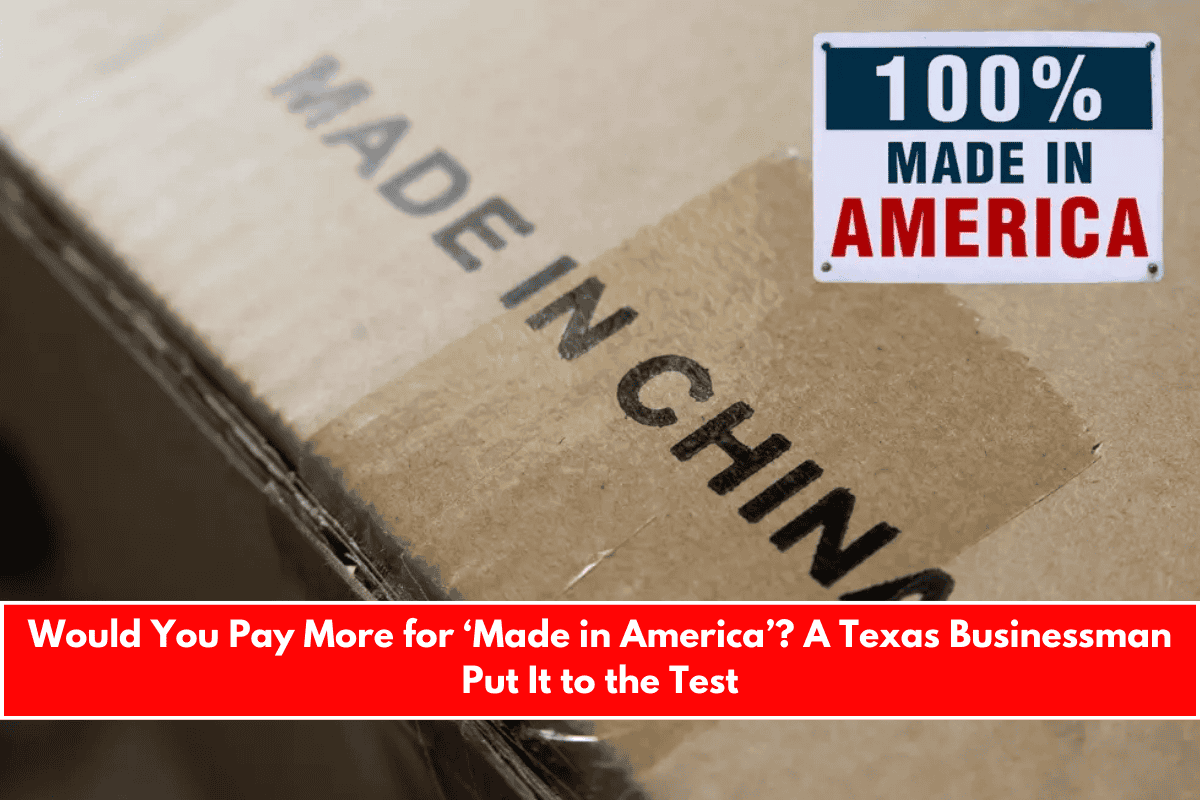It’s a question many American businesses and shoppers have asked: Would people actually spend more money on products that are made in the USA?
Ramon van Meer, a businessman based in Texas, decided to find out the answer for himself. As someone who sells showerheads online, he saw the perfect chance to test this idea when tariffs on Asian imports were introduced earlier this year.
So, he ran an experiment—and the results were eye-opening.
The Experiment: Same Product, Two Prices
Van Meer set up a simple choice on his company’s website. Shoppers could choose between:
- A regular imported showerhead priced at $129, or
- An identical-looking showerhead that was Made in the USA, priced at $229
That’s a $100 difference for the same product—just with a different origin. Would buyers choose to support local manufacturing even if it meant paying more?
The Result: Not One Buyer Chose “Made in USA”
Over 25,000 people visited the website during the experiment. About 600 people bought the imported showerhead.
But the number of buyers who chose the American-made version?
Zero. Not even one.
Van Meer expected fewer people to buy the domestic version—but not zero. “I was not expecting that the results were this off balance,” he admitted.
Why Was the USA-Made Version So Expensive?
Van Meer didn’t just increase the price for no reason. To produce the showerhead in the U.S., he had to find multiple suppliers for parts like plastic molding, metal plating, and water filtering elements. Unlike in Asia, where many of these services are available in one factory, U.S. suppliers are scattered—and no single manufacturer could produce the whole product.
Because of that, making the showerhead in America cost nearly 85% more. That’s why the price had to be set so high.
Other Businesses Say the Same
This problem isn’t unique to van Meer. Rick Whedon, another business owner who sells showerheads, said, “There’s nobody in the United States that’s going to start making showerheads here, even if the tariff were 250%.”
According to Whedon, imported production is too efficient and cost-effective to compete with—even when tariffs are high.
Do Buyers Really Care About “Made in the USA”?
The experiment shows a tough truth: while many people say they want to support American-made goods, few are willing to pay the extra cost. For most customers, price is still the deciding factor—even if the product is identical.
Van Meer says he still supports the idea of local manufacturing but has to be realistic as a businessman. “People want to support American-made, but when it comes to actually paying for it? That’s a different story,” he said.











Leave a Reply